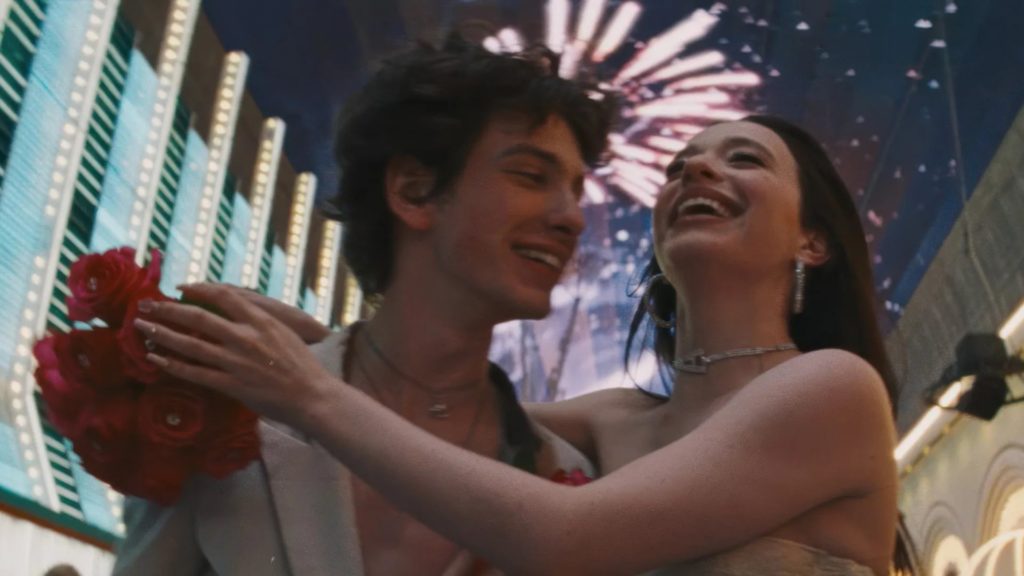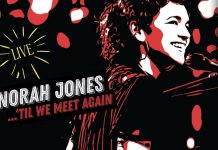Just in time for the Oscar Season, Anora opens in theaters in select cinemas in the Philippines. It is a comedy drama that challenges conservative taboos and is one of the best films in the list of Oscar nominees.
Indulge me for a minute and picture a dive coaster. It slowly but consistently bops the carriage up the ramp, takes a brief stop at the apex, and then plunges you back down head first into what would seem to be certain doom. The sensations you feel in a dive coaster perfectly encapsulates the plot of Anora from beginning to the bitter end.
The film tells the story of Ani (Mikey Madison), a sex worker from Brooklyn who crosses paths with Vanya (Mark Eydelshteyn), a 21-year old Russian billionaire, and ends up falling in love, getting married, and then having to live with the consequences of Vanya’s family finding out about their union. However, the magic of Anora’s storytelling comes in subtle but appreciated subversions of expectations. Ani is neither a loud mouth gold-digger who got lucky with being picked out by Vanya from her strip club, nor is she a helpless victim who needs saving. Instead, Ani is a complex, fully-fleshed out, character, whose reactions are grounded in reality, and whose personality is as far away from a typecasted stripper as she can get. The teaser also leads you to assume that Vanya’s family is a Russian mob or a cold ruthless Russian oligarch, and while there may be some truth to that, the plot plays out where Vanya’s parents, and their “henchmen”, are all well-rounded individuals who do not partake in unnecessary wanton violence, again grounded in reality and steered clear from all stereotypes of crazy rich Russians in film.

Subgenres
Director Sean Baker managed to weave together what I would refer to as different subgenres throughout the plot of the film. The first half takes the audience on this high pace, almost fantastical, whirlwind journey of Ani’s escalating relationship with Vanya, evoking the feel of watching the scene through a bubbly champagne glass. It peppers the scenes with an absurd, yet meticulously executed, amount of sex scenes, along with scenes centered on celebrations of life and nonchalance, which brings you back to the mood created by teen comedy films like 2012’s Spring Breakers or 2000’s Road Trip.
The tension in the plot then develops when Vanya and Ani decide to get married spontaneously in Las Vegas. Here, the film shows a peculiar moment where Ani is wrapped up on the couch with Vanya as a freshly married couple, and Ani realizes that she has yet to meet Vanya’s parents, and that she barely knows anything about Vanya’s family. The camera then lingers on Mikey Madison’s face for a couple of seconds which was enough to send a warning to the audience that something ominous lies in their future, but it does not stay long enough to cause the audience to overthink, making sure that the cinematography does not get ahead of the plot.
Perhaps the most clever subversion of expectations comes from the latter half of the film, which is a wild descent into chaos as their story unravels at the seams as the Russians attempt to intervene and destroy their marriage, but it is done at the most tasteful manner – it dives straight into the subgenre of Screwball Comedy. This change in pace outright reshapes the audience’s perception of what would seem to be the Russian mob and takes the plot into unpredictable territories of humor. Screwball Comedy relies on fast-paced exchanges of witty dialogue, verbal and physical humor, and often involves sex or gender as themes. It is at this stage that the theme of sex work takes a backseat and comedy stands front and center as we watch the Russians struggle to keep up with Ani and fumbles around like watching grown men ice skate for the first time. The best example of this is the scene where Ani meets the Russians in Vanya’s home and they endeavor to restrain Ani, with comedic timing perfected enough to make a whole moviehouse roar into laughter.
To provide better context, the film pays a subtle tribute to the Russian community in Brighton Beach and in Brooklyn, adding depth to the involvement of Russians in the film, and injects character into what could have been a run of the mill Russian mob group. Several scenes follow the characters into several spots and haunt along Brighton Beach populated by Russians. If a member of the audience unfamiliar with the thriving Russian community in Brooklyn asks why or how there are so many Russians portrayed in the film, then it stands to conclude that Anora found success in its mission to represent the community properly.
Towards the end, as though to clinch award nominations for his film, Director Sean Baker masterfully shifts the subgenre again into drama in the last few minutes before credits roll. Like releasing a pressure valve, Ani is allowed to confront her trauma and all the emotions built up by the chaos of every single thing that has transpired since she met Vanya. Mikey Madison’s performance brings it home as she stares into the camera, with the car engine sputtering in the background under the rain, and delivers again, a profound yet grounded reaction of her character Ani, finally hitting rock bottom. The story follows Ani’s struggle to escape the circumstances she finds herself in life, only to fail while grasping at false promises, kicking and screaming, and tragically landing back to where she started.
Sex
Right from the beginning, Anora sets the tone for the kind of film it can be, which is an exploration of the life of a sex worker without any apologies. The film successfully submerges the audience in the sex industry, but never portrays sex work as sensational or controversial. Instead, Director Sean Baker, who works on films concerning sex work, masterfully normalizes it in Anora, and uses it as a plot device rather than the core of the story. While there is no shortage of explicit sex scenes, none of the sex never feels self indulgent either. Baker demonstrates his extensive knowledge in crafting stories involving the sex industry with Anora, using film as a medium to normalize, and in turn, empower sex workers in its entirety.
This may be in particular importance in the context of the Philippines, where sex work is illegal and escorts are viewed as belonging to society’s bottom of the barrel. Anora is more than the sex, and more than the politics of empowering sex workers. Baker handles the theme with enough care and respect to ensure that it is viewed as vital to the plot, but still did not detract from everything Anora had to offer.
Film choices
The first few minutes of Anora may get the audience wondering why the resolution quality seems low and the screen appears grainy. However, this film choice is in fact intentional. Most of Director Sean Baker’s filmography relied on low budget filmmaking techniques. That is to say that early in his career, Baker shot films on low budget film cameras, and while Anora is not as funding deprived as his earlier work, Baker’s signature style is still present and roaring in this film. Anora is deliberately shot on variations of film cameras, with specific attention to the use of the 35mm Kodak Vision3 film. This decision allowed for several of Anora’s scenes to evoke nostalgia from movies from half a century back when film was widely used as the industry standard. The montage of Ani, Vanya, and their friends jumping from one activity into another in Las Vegas allowed the audience to feel as though they are accompanying Ani, transforming the scenes into a more personal and intimate experience.
Beyond the decision to use traditional film cameras, Director Sean Bakers’ color palette choices are equally as thought-evoking. The use of traditional film made the scenes look dated and indie, and it played perfectly with the canvass of singular color palettes to paint the most important scenes. Moreover, the color palette of the first half of the film, AKA the ascent up the dive coaster ramp, is vibrant and striking, with a mix of beige, blue, and red. The latter half, AKA the wild dive down the coaster, sees green and cooler, sometimes muted, tones to convey the story barrel-rolling into a tragedy. The use of red, blue and off-white, more than the aspect of artistry, may also symbolize the pursuit of the American dream for both Ani, who is desperate to be viewed as American despite being of Russian descent, and for Vanya, who is infatuated with American culture.
Anora is a worthy frontrunner in this year’s Oscars. It is a Cinderella story, with extensive emotional depth and while being set in a non-conventional story, never feels foreign nor unrelatable. It is as hilarious as it is brutally tragic, and is truly one of the greatest films to come out of 2024.
Score: 10/10
Click here for more stories like this. You may also follow and subscribe to our social media accounts: Facebook, YouTube, Instagram, TikTok, X, and Kumu.





















